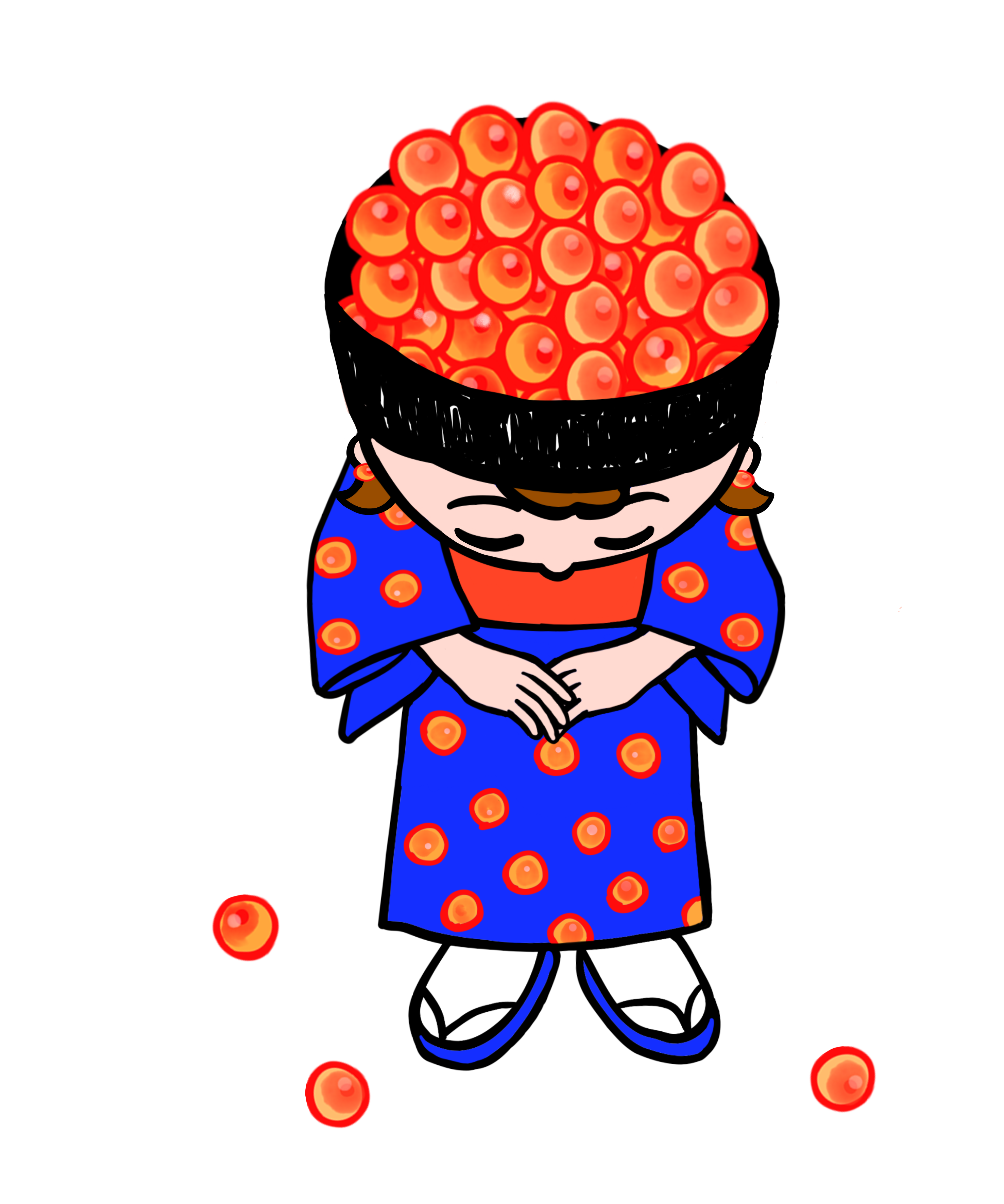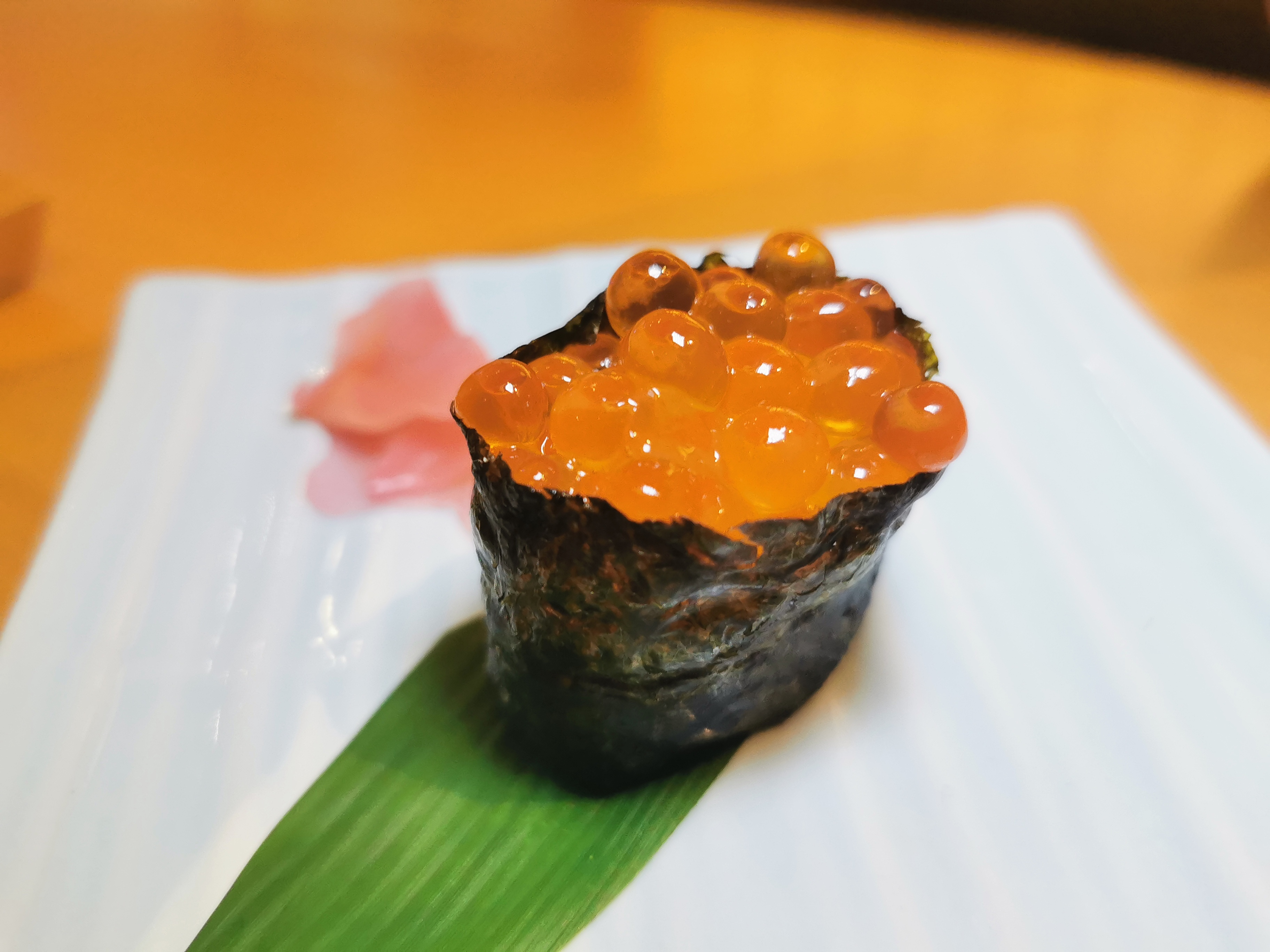Mastering Ikura De Yarimasu: Your Guide To Making Delicious Salmon Roe At Home
Have you ever tasted those shimmering, orange pearls of salmon roe, known as ikura, and wished you could somehow make them yourself? That burst of rich, savory flavor, the way each tiny orb pops delightfully in your mouth, it is truly a captivating experience. For many, the idea of preparing such a gourmet item at home might seem like something only a professional chef could attempt, something perhaps too complicated or requiring special tools.
Well, to be honest, it's almost like a secret that has been kept from home cooks for too long. The truth is, making ikura, or as we might say, doing "ikura de yarimasu," is actually quite straightforward. You do not need a fancy kitchen or years of culinary schooling to bring this delicacy to your own table. It is, in fact, super easy, a delightful project for anyone who loves good food and wants to try something new.
This guide will walk you through the whole process, showing you how simple it can be to create those vivid orange gems right in your own kitchen. We will talk about what ikura actually is, why you might want to prepare it yourself, and, of course, every step of the "ikura de yarimasu" journey. So, let us get ready to make some truly delicious ikura.
Table of Contents
- What Exactly is Ikura?
- Why Try Ikura de Yarimasu at Home?
- Getting Started: What You Need for Ikura de Yarimasu
- The Simple Steps to Ikura de Yarimasu
- Serving and Enjoying Your Homemade Ikura
- The Nutritional Goodness of Ikura
- Frequently Asked Questions About Ikura
What Exactly is Ikura?
Ikura, you know, is that wonderful cured salmon roe. It has a juicy texture that pops with every single bite, and a rich flavor that just melts away in your mouth. This gourmet food item is also one of the most popular choices you will find in sushi restaurants, yet it is a relatively new ingredient in the world of sushi, which is kind of interesting.
The term ‘ikura’ is believed to have been derived from ‘ikra’, a Russian word that means fish eggs. As a matter of fact, the Japanese did not eat salmon much until a very successful Norwegian marketing effort changed things. However, ikura today is used to strictly refer to the eggs of salmon fish, and not just any fish eggs, which is something important to remember.
Unlike tobiko, which is flying fish roe, or masago, which is capelin roe, ikura is significantly larger. It boasts a vibrant orange hue and a distinctive, almost creamy, texture. It is large, translucent, and vibrant, bursting with a clean, briny flavor that really reflects the salmon’s life in cold, wild rivers and oceans. Often, it is served fresh or lightly cured in soy sauce, dashi, and sake, which gives it that truly unique taste. They are salty, very savory, rich in umami, and perhaps a bit more fishy than most other sushi items, potentially making ikura one of the more controversial types of sushi, but still loved by many, apparently.
- Female Russian Bodybuilders
- Thank You Letter Appreciation To A Friend
- Actress On Drugs
- Denver Nuggets Vs San Antonio Spurs Matches
- Snoop Dogg Police Record
Why Try Ikura de Yarimasu at Home?
You might be wondering why you should even bother with "ikura de yarimasu" when you can simply buy it. Well, there are a few compelling reasons, to be honest. The freshness you achieve when making it yourself is simply unparalleled. When you cure salmon roe at home, you get to control the ingredients, ensuring a pure and clean taste that is hard to match with store-bought versions. It is, like, a whole different experience.
Moreover, the process itself is quite rewarding. Transforming dull orange sacks of roe into those vivid orange gems is, in a way, a little bit magical. It is a kitchen project that feels incredibly gourmet but is surprisingly accessible. Plus, you get to customize the curing liquid to your exact liking, adjusting the balance of soy sauce, dashi, and sake, which is pretty cool.
And let us be real, the satisfaction of serving something so delicious and seemingly complex, knowing you made it yourself, is pretty great. It is a conversation starter, a way to impress your friends and family, and a fantastic way to deepen your connection with Japanese cuisine. You get to enjoy it in sushi and as a garnish, knowing every pop of flavor came from your own hands, which is really something special.
Getting Started: What You Need for Ikura de Yarimasu
The beauty of "ikura de yarimasu" is that it does not require a huge list of unusual items. You will need the star ingredient, of course, and then just a few pantry staples. It is more about the technique than about having a lot of special equipment, which is pretty convenient.
Sourcing Your Roe
The most important thing you will need is uncured salmon roe. This means fresh salmon roe still in the skein, which is the membrane that holds all the eggs together. Finding fresh salmon roe might be the trickiest part, but it is certainly doable. You can often find it at good fish markets, especially during salmon season, or from specialty Japanese grocery stores. Sometimes, you can even ask your local fishmonger to order it for you. It is really the heart of the whole process.
When you get the roe, it should look plump and fresh, with a clear, vibrant color. Avoid anything that looks dull or cloudy, as that might mean it is not as fresh as it could be. The quality of your raw ingredient will directly impact the taste and texture of your finished ikura, so picking good roe is, like, very important.
Pantry Staples and Basic Tools
Once you have your fresh salmon roe, the rest of the ingredients are probably already in your kitchen. You will need soy sauce, dashi, and sake for the curing liquid. These are pretty standard items in many kitchens, especially if you enjoy cooking Asian dishes. Some people also add a bit of mirin or sugar for a touch of sweetness, but that is totally up to you.
As for tools, you really just need a few basic things. A bowl for separating the roe, a fine-mesh sieve or strainer, and some clean containers for curing and storing your finished ikura. That is pretty much it. You do not need any complicated gadgets or specialized machinery, which makes this project quite accessible for almost anyone, you know?
The Simple Steps to Ikura de Yarimasu
Now for the fun part: the actual "ikura de yarimasu" process. This is where you transform those dull sacks into the glistening pearls we all love. It is a process that sounds complicated, but honestly, it is quite simple once you get the hang of it. We are talking about separating, cleaning, and then curing, that is all.
Separating and Cleaning the Gems
The first step is to separate the individual eggs from the skein. This might seem a bit fiddly, but there are some easy ways to do it. One common method is to gently rub the skein over a coarse mesh screen or a cooling rack, allowing the individual eggs to fall through into a bowl of cool water below. You can also use your fingers, very gently, to coax the eggs off the membrane while submerged in water. The water helps keep the eggs from breaking and makes the membrane easier to handle.
Once separated, you will want to clean the eggs. This means gently rinsing them in several changes of cool water to remove any remaining bits of membrane or impurities. You will notice the water might get a little cloudy at first, but keep rinsing until the water stays clear. This step is pretty important for a clean-tasting final product. Just be gentle, as the eggs are delicate, you know?
The Curing Magic
After the eggs are clean, it is time for the curing. This is where the magic happens, giving the ikura its distinctive flavor. You will prepare your curing liquid by combining soy sauce, dashi, and sake. The exact proportions can vary based on your preference for saltiness and umami, so you might want to experiment a little. Some people heat the liquid gently and then let it cool before adding the roe, while others use it at room temperature. It just depends on what you like.
Once your curing liquid is ready, gently add the cleaned ikura. Make sure the eggs are fully submerged. The curing time can vary, typically from a few hours to overnight, depending on how firm and flavorful you want your ikura to be. The longer it cures, the more flavor it will absorb and the firmer the eggs might become. It is a matter of personal taste, really.
After the curing time is up, carefully drain the ikura. You can use a fine-mesh sieve for this. Your homemade ikura is now ready to enjoy! Store any leftover ikura in an airtight container in the refrigerator. It usually keeps well for several days, but it is best when fresh, obviously.
Serving and Enjoying Your Homemade Ikura
Now that you have successfully completed "ikura de yarimasu," it is time to enjoy your delicious creation! The most classic way to enjoy ikura is, of course, in sushi. Ikura sushi is a captivating culinary experience centered around those glistening, orange pearls of salmon roe served atop a bed of vinegared rice, often cradled within a nori seaweed wrap. The rich and savory flavors burst into your mouth as you take a bite, making you feel ecstatic, to be honest.
But sushi is not the only way to enjoy it. Ikura also makes a fantastic garnish for many dishes. You can sprinkle it over a bowl of plain white rice for a simple yet elegant meal, or add it to a seafood pasta for an extra pop of flavor and texture. It is also wonderful on top of avocado toast, or even as a luxurious topping for scrambled eggs, which is something you might not have considered. Its clean, briny flavor complements so many different things.
You can also serve it simply as a standalone appetizer, perhaps with a little grated daikon radish or a squeeze of lemon. The delicious orange balls that emit a sweet and lingering flavor into your mouth are called salmon roe for a reason; they are just that good. So, go ahead and get creative with how you use your freshly made ikura!
The Nutritional Goodness of Ikura
Beyond its incredible taste and texture, ikura also packs a punch when it comes to nutritional value. Salmon roe is known to be a good source of omega-3 fatty acids, which are beneficial for heart health and brain function. It also contains a good amount of protein, which is important for building and repairing tissues in your body. So, it is not just tasty; it is good for you, too.
It also provides various vitamins and minerals, including Vitamin D and Vitamin B12, which play important roles in overall health. So, when you are enjoying those delightful little pearls, you are not just treating your taste buds, you are also giving your body some good stuff. It is a pretty healthy indulgence, in a way.
You can learn more about Japanese culinary traditions on our site, and if you are curious about other seafood delicacies, link to this page here.
Frequently Asked Questions About Ikura
Here are some common questions people often ask about ikura:
Is ikura safe to eat raw?
Yes, ikura is typically consumed raw after it has been cured. The curing process, usually with salt and a liquid like soy sauce, dashi, and sake, makes it safe and gives it its distinctive flavor. Freshness is key when you are preparing it yourself, so make sure you get very good quality roe, you know?
How long does homemade ikura last?
Once cured, homemade ikura should be stored in an airtight container in the refrigerator. It generally stays fresh and delicious for about 3 to 5 days. For longer storage, you can actually freeze it, but it is best to eat it relatively quickly for the best texture and flavor, basically.
What is the difference between ikura and tobiko?
Ikura refers specifically to salmon roe, which is significantly larger, boasting a vibrant orange hue and a distinctive, almost creamy, texture. Tobiko, on the other hand, comes from flying fish and is much smaller, with a crunchier texture. Both are used in sushi, but they offer very different experiences, as a matter of fact.
So, there you have it, the simple steps to mastering "ikura de yarimasu" right in your own kitchen. It is a rewarding project that brings a touch of gourmet elegance to your home cooking without a lot of fuss. Give it a try this week, and prepare to be amazed by how easy and delicious homemade ikura can be. You will be so glad you did, honestly. For more details on salmon and its journey, you might want to check out this resource: Fisheries.no.
- Ed And Lorraine Warren Museum
- Filip Stevanovic
- Andy Garcia Wife Wedding
- Red Claws Basketball
- Dylan Dreyer Pay

IKURA | Oh!SUSHI

Ikura de Yaremasu ka? 1262032 Doujin - edoujin

Ikura Sushi | Traditional Rice Dish From Japan